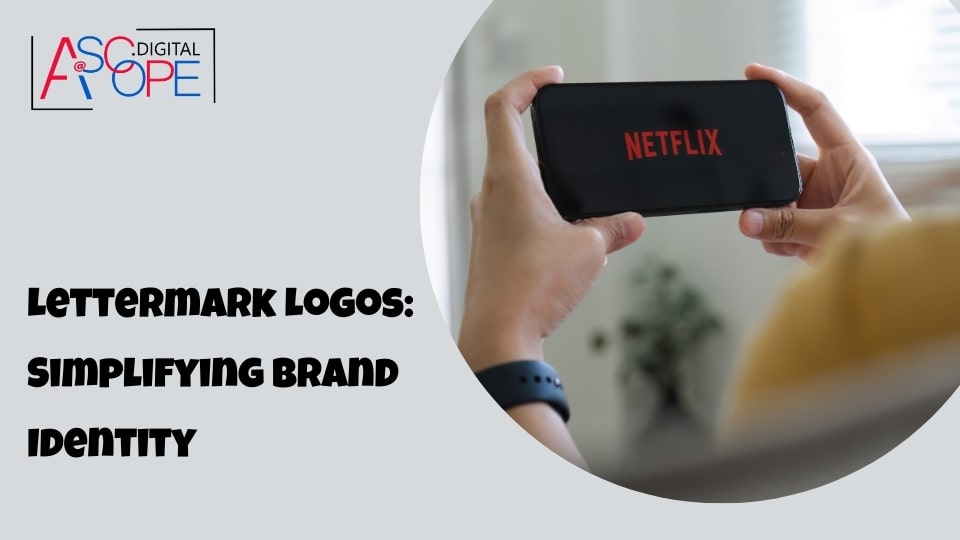In the vast and diverse landscape of graphic design, one element stands out for its simplicity and effectiveness: the lettermark logo. This type of logo, characterized by the use of a brand’s initials, has become a powerful tool in branding and identity design. Lettermark logos, also known as monogram logos, are a unique way to create a recognizable and memorable brand identity. This article delves into the world of lettermark logos, exploring their benefits, design principles, and impact on brand identity.
The Power of Simplicity
In an era where consumers are bombarded with information and visual stimuli, simplicity can be a breath of fresh air. Lettermark logos capitalize on this principle by distilling a brand’s identity into its most essential components. By using just the initials of a brand name, lettermark logos can create a strong, clean, and memorable visual mark.
Consider some of the most iconic brands that have utilized lettermark logos: IBM, CNN, HBO, and NASA. These brands have achieved global recognition with logos that are simple yet powerful. The minimalist nature of lettermark logos makes them versatile and easy to reproduce across various media, from business cards to billboards.
Benefits of Lettermark Logos
Memorability
One of the key advantages of lettermark logos is their memorability. Human brains are wired to recognize and remember patterns and symbols. A well-designed lettermark logo leverages this cognitive ability, making it easier for consumers to recall a brand. This is particularly important in crowded markets where standing out is crucial.
Versatility
Lettermark logos are highly versatile and adaptable. Their simple design allows them to be scaled up or down without losing clarity or impact. Whether on a small mobile screen or a large outdoor banner, a lettermark logo maintains its integrity and recognizability. This adaptability is essential in today’s multi-platform world.
Professionalism
The clean and straightforward design of lettermark logos often conveys a sense of professionalism and sophistication. For businesses looking to establish a strong and credible brand image, a lettermark logo can be an excellent choice. It communicates that the brand is serious, focused, and confident.
Brand Recognition
Using initials to represent a brand can help build strong brand recognition, especially when the full name is long or complex. Over time, the initials become synonymous with the brand itself, creating a shortcut in the minds of consumers. This can be particularly effective for brands that already have a significant presence and are looking to reinforce their identity.
Design Principles for Lettermark Logos

Creating an effective lettermark logo involves more than just selecting a font and arranging letters. There are several design principles to consider to ensure the logo is impactful and aligns with the brand’s identity.
Typography
Typography plays a crucial role in lettermark logos. The choice of font can convey different emotions and associations. For instance, a serif font might communicate tradition and reliability, while a sans-serif font could suggest modernity and simplicity. Custom typography can also be used to create a unique and distinctive logo.
Balance and Proportion
A well-balanced logo ensures that no part of the design overwhelms the other. Proportion is key to achieving this balance. The spacing between letters, the thickness of the strokes, and the overall composition should be harmonious. An unbalanced logo can appear awkward and unprofessional.
Color
Color is another critical element in logo design. The color palette should reflect the brand’s personality and values. For example, blue is often associated with trust and professionalism, making it a popular choice for corporate logos. On the other hand, bright and bold colors can convey creativity and energy.
Simplicity
The beauty of lettermark logos lies in their simplicity. However, simplicity does not mean boring. A good lettermark logo should be simple yet distinctive. It should be able to stand out even without intricate details or embellishments.
Uniqueness
While simplicity is essential, the logo should also be unique. It should not be easily confused with other logos, especially those within the same industry. A unique lettermark logo helps in establishing a distinct brand identity.
The Impact on Brand Identity
Lettermark logos play a significant role in shaping and reinforcing brand identity. They serve as the visual representation of the brand and can evoke specific emotions and associations. A well-designed lettermark logo can communicate the brand’s values, personality, and mission.
Building Trust
A professional and polished lettermark logo can build trust with consumers. It shows that the brand is established and serious about its business. Trust is a crucial factor in consumer decision-making, and a strong logo can be a significant asset in building that trust.
Creating a Consistent Image
Consistency is key in branding. A lettermark logo helps create a consistent image across all brand touchpoints. Whether it’s on a website, social media, packaging, or advertisements, the logo serves as a unifying element that ties all brand materials together.
Enhancing Recall
Brand recall is the ability of consumers to remember and recognize a brand. A lettermark logo, with its simplicity and distinctiveness, can enhance brand recall. When consumers can easily recall a brand, they are more likely to choose it over competitors.
Facilitating Brand Loyalty
A strong and recognizable logo can foster brand loyalty. When consumers have positive experiences with a brand, the logo becomes a symbol of those experiences. Over time, this can create a loyal customer base that associates the logo with quality and reliability.
Case Studies: Successful Lettermark Logos
IBM
IBM’s lettermark logo is a prime example of simplicity and effectiveness. The logo, designed by Paul Rand in 1972, features the letters “IBM” in a bold, blue typeface. The horizontal stripes running through the letters add a sense of dynamism and modernity. This logo has become synonymous with innovation and reliability in the tech industry.
CNN
CNN’s logo, designed by Anthony Guy Bost, uses a simple yet impactful red typeface. The connected letters create a sense of continuity and flow, reflecting the 24-hour news cycle. The logo’s simplicity makes it instantly recognizable and versatile across various media platforms.
HBO
HBO’s logo is another excellent example of a successful lettermark logo. The bold, black letters with a small circle inside the “O” create a strong visual impact. This logo has become a symbol of quality entertainment and premium content.
NASA
NASA’s lettermark logo, affectionately known as the “worm” logo, was introduced in 1975. The sleek, red letters represent modernity and progress. Although the logo was retired in 1992, it was brought back in 2020 due to its popularity and iconic status.
Designing Your Own Lettermark Logo

Creating a lettermark logo involves a thoughtful and strategic design process. Here are some steps to guide you through the process:
Understand Your Brand
Before diving into the design, it’s essential to have a deep understanding of your brand. What are your brand values, personality, and mission? Who is your target audience? The answers to these questions will guide your design decisions and ensure that the logo aligns with your brand identity.
Choose the Right Typography
As mentioned earlier, typography is crucial in lettermark logos. Experiment with different fonts and styles to find one that best represents your brand. Consider custom typography if you want a truly unique logo.
Play with Proportions and Balance
Ensure that your logo is well-balanced and proportionate. Experiment with the spacing between letters, the thickness of the strokes, and the overall composition. A balanced logo will appear more professional and polished.
Select an Appropriate Color Palette
Choose colors that reflect your brand’s personality and values. Consider how the colors will look across different media and backgrounds. A well-chosen color palette can enhance the impact of your logo.
Test and Iterate
Once you have a draft of your logo, test it across various applications. How does it look on a business card? How does it appear on a website or a mobile screen? Gather feedback from stakeholders and make necessary adjustments. Iteration is key to refining and perfecting your logo.
Conclusion
Lettermark logos offer a powerful and effective way to simplify and enhance brand identity. Their simplicity, memorability, versatility, and professionalism make them an excellent choice for businesses looking to create a strong and recognizable brand image. By following the design principles and understanding the impact of lettermark logos, you can create a logo that not only represents your brand but also resonates with your audience.
As you embark on the journey of designing your lettermark logo, remember that simplicity does not mean sacrificing uniqueness. A well-designed lettermark logo should be simple yet distinctive, professional yet memorable. By achieving this balance, you can create a logo that stands the test of time and helps build a strong and cohesive brand identity.
Investing in a professional and well-crafted lettermark logo can significantly impact your brand’s success. It can enhance brand recall, build trust, and foster brand loyalty. Moreover, a strong logo can improve your brand’s visibility and recognition, thus improving traffic and sales for your website. Read more on the other reasons why your website isn’t getting traffic. A lettermark logo is not just a design element; it is a strategic tool that can elevate your brand and set you apart from the competition


